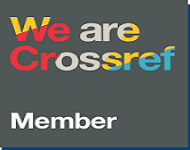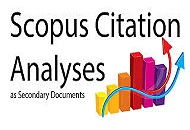Development of E-Modules Based Science, Environment, Technology, and Society (SETS) on Buffer Solution Material for Class XI Senior High School
DOI:
https://doi.org/10.33394/jp.v12i4.17426Keywords:
E-Modules, SETS, Critical Thinking Skills, Scientific Attitude., Buffer Solution.Abstract
This study aims to describe the characteristics, validity results, practicality, and student responses to SETS-based E-Modules on buffer solution material that was developed. The research uses a Research and Development (R&D) method with the 4D model, which has four stages, namely define, design, development, and disseminate. This study examined six high school chemistry teachers and 32 12th-grade students who had studied buffer solutions. The instrument used is a product quality assessment sheet, including validation sheets for material experts, media, and practitioners, as well as student responses. The data analysis technique was carried out by converting qualitative data from media experts, material experts, and chemistry teachers into quantitative data using a Likert scale and the student responses using the Guttman scale. The results showed that the SETS-based E-Module was of excellent quality and suitable for teaching on the topic of buffer solutions. This is evidenced by validation calculations performed by material and media experts, practicality tests conducted by chemistry teachers, and student responses, which yielded scores of 89%, 94%, 83%, and 80%, respectively.
References
Alighiri, D., Drastisianti, A., & Susilaningsih, E. (2018). Pemahaman Konsep Siswa Materi Larutan Penyangga dalam Pembelajaran Multiple Representasi. Jurnal Inovasi Pendidikan Kimia, 12(2), 2192–2200. https://doi.org/10.15294/jipk.v12i2.15735
Asmiyunda, A., Guspatni, G., & Azra, F. (2018). Pengembangan E-Modul Kesetimbangan Kimia Berbasis Pendekatan Saintifik untuk Kelas XI SMA/MA. Jurnal Eksakta Pendidikan (JEP), 2(1), 155–161. https://doi.org/10.24036/jep/vol2-iss2/202
Harpiyani, P. R., Masriani, M., & Rasmawan, R. (2021). Pengembangan LKPD Berbasis Science, Environment, Technology, and Society Materi Larutan Penyangga di SMAN 1 Sungai Raya. EduChem, 2(1). https://doi.org/10.26418/educhem.v2i1.38765
Hendriko, H., & Iryani, I. (2022). Validitas E-Module Berbasis Inkuiri Terbimbing Terintegrasi Al-Qur’an pada Materi Laju Reaksi Kelas XI Madrasah Aliyah. Edukimia, 4(3), 113–119. https://doi.org/10.24036/ekj.v4.i3.a406
Herawati, N. S., & Ali, M. (2018). Pengembangan Modul Elektronik (E-Modul) Intereaktif pada Mata Pelajaran Kimia Kelas XI SMA. Jurnal Inovasi Teknologi Pendidikan, 5(2), 180–191.
Jamun, Y. M. (2016). Desain Aplikasi Pembelajaran Peta Nusa Tenggara Timur Berbasis Multimedia. Jurnal Pendidikan Dan Kebudayaan Missio, 8(1), 144–150. https://doi.org/10.36928/jpkm.v8i1.101
Kurniawan, D. Candra, Kuswandi, D., & Husna, A. (2018). Pengembangan Media Video Pembelajaran Pada Mata Pelajaran IPA Tentang Sifat Dan Perubahan Wujud Benda Kelas IV SDN Merjosari 5 Malang. Jurnal Inovasi Dan Teknologi Pembelajaran, 4, 119–125. http://dx.doi.org/10.17977/um031v4i22018p119
Lafifa*, F., Rosana, D., Jumadi, J., & Adelia, M. (2022). Development of Mobile Learning Based Electronic Student Worksheets to Measure Learning Motivation on Sensing Systems Materials. Jurnal Pendidikan Sains Indonesia, 10(4), 778–789. https://doi.org/10.24815/jpsi.v10i4.25944
Lai, J. W. M., & Bower, M. (2020). Evaluation of Technology Use in Education: Findings from a Critical Analysis of Systematic Literature Reviews. Journal of Computer Assisted Learning, 36(3), 241–259. https://doi.org/10.1111/jcal.12412
Liu, M., Zhou, R., Dai, J., & Feng, X. (2022). Analysis and Practice of Using Modern Information Technology for Classroom Teaching Mode Reform. Mobile Information Systems, 2022, 1–8. https://doi.org/10.1155/2022/2565735
Liyanage, D., Lo, S. M., & Hunnicutt, S. S. (2021). Student Discourse Networks and Instructor Facilitation in Process Oriented Guided Inquiry Physical Chemistry Classes. Chemistry Education Research and Practice, 22(1), 93–104. https://doi.org/10.1039/D0RP00031K
Luthfiyah, F. (2020). Pengembangan Media Pembelajaran Kimia Interaktif Berbasis Blended Learning Berorientasi Representasi Kimia. Journal of Tropical Chemistry Research and Education, 2(1), 26–33. https://doi.org/10.14421/jtcre.2020.21-04
Mahartika, I., Afrianis, N., & Yuhelman, N. (2020). Analisis Kebutuhan Chemistry Games (CGs) Pada Pembelajaran Kimia di SMA/MA Kota Pekanbaru. Journal of Natural Science and Integration, 3(1), 35–44.
Mansur, H., & Utama, A. H. (2021). The Evaluation of Appropriate Selection Learning Media at Junior High School. Indonesian Journal of Instructional Media and Model, 3(1), 17. https://doi.org/10.32585/ijimm.v3i1.1401
Mulyani, Purwati, P. D., & Sabilillah, N. S. (2024). Development of E-Comic Media Assisted by Class Minimum Competency Assessment (AKM) for Enhancing Competency in Elaborating Fairy Tale Messages Among Lower Grade Students. KEMBARA Journal of Scientific Language Literature and Teaching, 10(1), 227–244. https://doi.org/10.22219/kembara.v10i1.30847
Muniroh, J. (2024). Pengembangan E-Modul IPA Berbasis Science, Environment, Technology, and Society (SETS) Pada Materi Zat Aditif Dan Adiktif Untuk Meningkatkan Literasi Sains Dan Sikap Peduli Lingkungan Peserta Didik [Thesis]. Universitas Negeri Yogyakarta.
Putra, B. P., Purwanto, A., & Risdianto, E. (2022). Respon Peserta Didik Terhadap Keterbacaan E-Modul Berbasis SSCS (Search, Solve, Create, Share) untuk Melatihkan Kemampuan Berpikir Kreatif Peserta Didik Pada Materi Gelombang di SMA. Amplitudo: Jurnal Ilmu Pembelajaran Fisika, 2(1), 75–82. https://doi.org/10.33369/ajipf.2.1.75-82
Putri, D. K., & Rusmini, R. (2021). Hydrocarbon and Petroleum with SETS Approach Module to Train Students’ Critical Thinking Skills. Indonesian Journal of Science and Mathematics Education, 4(1), 12–24. https://doi.org/10.24042/ijsme.v4i1.7839
Rahayu, J., & Solihatin, E. (2019). Pengembangan Modul Pembelajaran Online pada Mata Pelajaran Kimia. Jurnal Ilmiah Wahana Pendidikan, 5(1), 13–28. https://doi.org/10.24036/semesta/vol2-iss1/38.
Rahmah, S., Mulyani, S., & Masyikuri. (2017). Pengembangan Modul Berbasis SETS (science, Environment, Technology, Society) Terintegrasi Nilai Islam di SMAI Surabaya pada Materi Ikatan Kimia. Jurnal Pendidikan, 2(1), 57–62. http://dx.doi.org/10.26740/jp.v2n1.p70-76
Rahman, L., Silaban, R., & Nurfajriani. (2023). The Effectiveness of Using Chemistry E-Modules Assisted Flip Pdf Professional on Improving Learning Outcomes and Motivating Students. 090006. https://doi.org/10.1063/5.0110063
Rahmawati, D. N., Purnomo, T., & Kuntjoro, S. (2022). Profile of SETS Approach to Improve Student’s Critical Thinking Skills During 2015 to 2022. IJORER : International Journal of Recent Educational Research, 3(3), 340–353. https://doi.org/10.46245/ijorer.v3i3.214
Riwu, R., Budiyasa, I. W., & Rai, I. G. A. (2018). Penerapan Pendekatan SETS (Science, Environment, Technology, and Society) untuk Meningkatkan Hasil Belajar Biologi Siswa. Jurnal Edukasi Matematika dan Sains, 7(2), 162–170. https://doi.org/10.5281/ZENODO.2548090
Safitri, A. (2015). Pengembangan Modul Kimia SMA Berbasis Inkuiri Terbimbing pada Materi Larutan Penyangga [Skripsi, Universitas Negeri Semarang]. https://lib.unnes.ac.id/22405/1/4301411057-S.pdf
Safitri, R., & Sari, M. (2022). Pengembangan E-Modul Kimia Berbasis SETS (science, Environment, Technology, and Society) untuk Siswa SMAN 1 Kecamatan Payakumbuh. Journal of Chemistry Education and Integration, 1(1), 9. https://doi.org/10.24014/jcei.v1i1.16245
Saputri, S. D., & Syuhada, F. A. (2022). Pengembangan E-Modul Terintegrasi Pendidikan Karakter Berbasis SETS pada Materi Sistem Koloid. Jurnal Zarah, 10(2), 101–113. https://doi.org/10.31629/zarah.v10i2.4477
Seftianingsih, M. U. (2021). Pengembangan Media Pembelajaran E-Module Physics in Life Berbasis SETS Berbantuan Aplikasi Adobe Indesign Untuk Meningkatkan Minat Belajar dan Penguasaan Materi Fisika Peserta Didik Kelas X SMA [Thesis]. Universitas Negeri Yogyakarta.
Syahri, W., Muhaimin, M., & Ardi, A. M. (2017). Pengembangan Multimedia Interaktif Berbasis Representasi Kimia pada Materi Laju Reaksi untuk Siswa Kelas XI SMAN 4 Kota Jambi. Journal of The Indonesian Society of Integrated Chemistry, 9(1), 26–34. https://doi.org/10.22437/jisic.v9i1.5081
Thiagarajan, S., Semmel, D. S., & Semmel, M. I. (1974). Instructional Development for Training Teacher of Expceptional Children. Indiana University.
Timamah, I., Jannah, F., Munawwarah, F., & Zainab, N. (2025). Development of Animated Video-Based Teaching Materials for SKI Subjects for Class V MI Tarbiyatul Athfal Sera Tengah Bluto Sumenep. COMPETITIVE: Journal of Education, 3(4), 210–218. https://doi.org/10.58355/competitive.v3i4.122
Ulyawati. (2022). Pengembangan Multimedia Interaktif Berbasis Pendekatan Science, Environment, Technology, dan Society (SETS) Untuk Meningkatkan Kemampuan Berpikir Kritis dan Sikap Ilmiah IPA Siswa Kelas IV Sekolah Dasar [Thesis]. Universitas Negeri Yogyakarta.
Warlinda, Y. A., Yerimadesi, Y., Hardeli, H., & Andromeda, A. (2022). Implementation of guided discovery learning model with SETS approach assisted by E-Modul chemistry on scientific literacy of students. Jurnal Penelitian Pendidikan IPA, 8(2), 507–514. https://doi.org/10.29303/jppipa.v8i2.1264
Widiastuti, N. L. G. K., & Purnawijaya, I. P. E. (2021). Improving Science Learning Outcomes Through the SETS (Science Environment Technology and Society) Approach. Indonesian Journal Of Educational Research and Review, 4(2), 252. https://doi.org/10.23887/ijerr.v4i2.38388
Wulansari, E. W., Kantun, S., & Suharso, P. (2018). Pengembangan E-Modul Pembelajaran Ekonomi Materi Pasar Modal untuk Siswa Kelas XI IPS MAN 1 Jember Tahun Ajaran 2016/2017. Jurnal Pendidikan Ekonomi: Jurnal Ilmiah Ilmu Pendidikan, Ilmu Ekonomi Dan Ilmu Sosial, 12(1), 1. https://doi.org/10.19184/jpe.v12i1.6463
Yanti, N., Leny, L., Rusmansyah, R., & Iriani, R. (2024). Pengembangan E-Modul Hukum Dasar Kimia dengan Model Problem Based Learning Berbantuan Fliphtml5 untuk Meningkatkan Kemampuan Berpikir Kritis dan Literasi Sains. JCAE (Journal of Chemistry And Education), 7(3), 175–187. https://doi.org/10.20527/jcae.v7i3.3007
Yerimadesi, Warlinda, Y. A., Hardeli, & Andromeda, A. (2022). Implementation of Guided Discovery Learning Model with SETS Approach Assisted by Chemistry E-Module to Improve Creative Thinking Skills of Students. Jurnal Penelitian Pendidikan IPA, 8(3), 1151–1157. https://doi.org/10.29303/jppipa.v8i3.1522
Yulhendri, Y., Mardhotillah, N. I., Alisha, W. P., & Susanti, N. (2022). Analysis of Media Use and Learning Interaction to Improving Student Engagement. Dinamika Pendidikan, 17(1), 37–47. https://doi.org/10.15294/dp.v17i1.35304
Published
How to Cite
Issue
Section
Citation Check
License
Copyright (c) 2025 The Author(s)

This work is licensed under a Creative Commons Attribution-ShareAlike 4.0 International License.
License and Publishing Agreement
In submitting the manuscript to the journal, the authors certify that:
- They are authorized by their co-authors to enter into these arrangements.
- The work described has not been formally published before, except in the form of an abstract or as part of a published lecture, review, thesis, or overlay journal.
- That it is not under consideration for publication elsewhere,
- That its publication has been approved by all the author(s) and by the responsible authorities tacitly or explicitly of the institutes where the work has been carried out.
- They secure the right to reproduce any material that has already been published or copyrighted elsewhere.
- They agree to the following license and publishing agreement.
Copyright
Authors who publish with Jurnal Paedagogy agree to the following terms:
- Authors retain copyright and grant the journal right of first publication with the work simultaneously licensed under a Creative Commons Attribution License (CC BY-SA 4.0) that allows others to share the work with an acknowledgment of the work's authorship and initial publication in this journal.
- Authors are able to enter into separate, additional contractual arrangements for the non-exclusive distribution of the journal's published version of the work (e.g., post it to an institutional repository or publish it in a book), with an acknowledgment of its initial publication in this journal.
- Authors are permitted and encouraged to post their work online (e.g., in institutional repositories or on their website) prior to and during the submission process, as it can lead to productive exchanges, as well as earlier and greater citation of published work.
Licensing for Data Publication
-
Open Data Commons Attribution License, http://www.opendatacommons.org/licenses/by/1.0/ (default)






